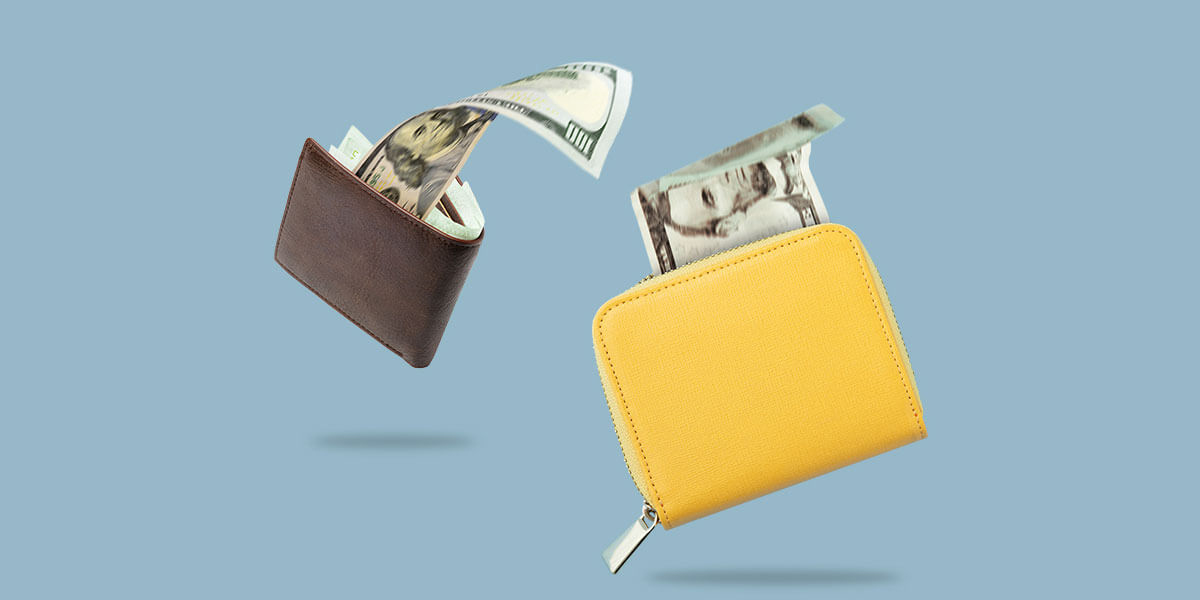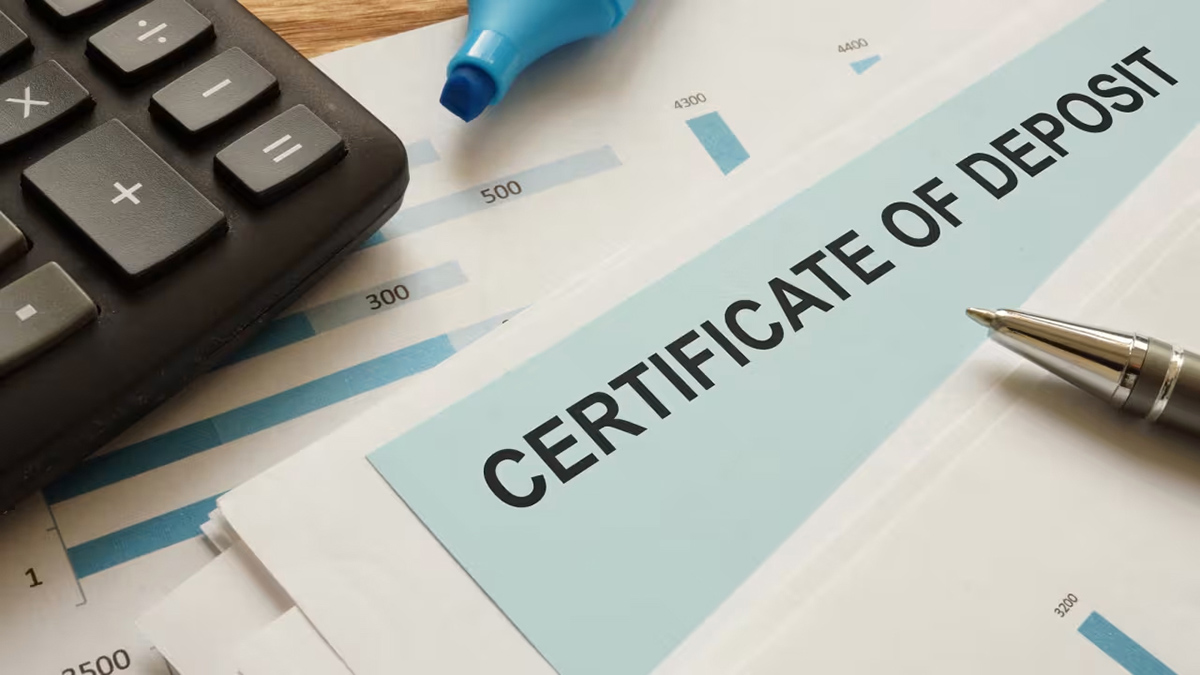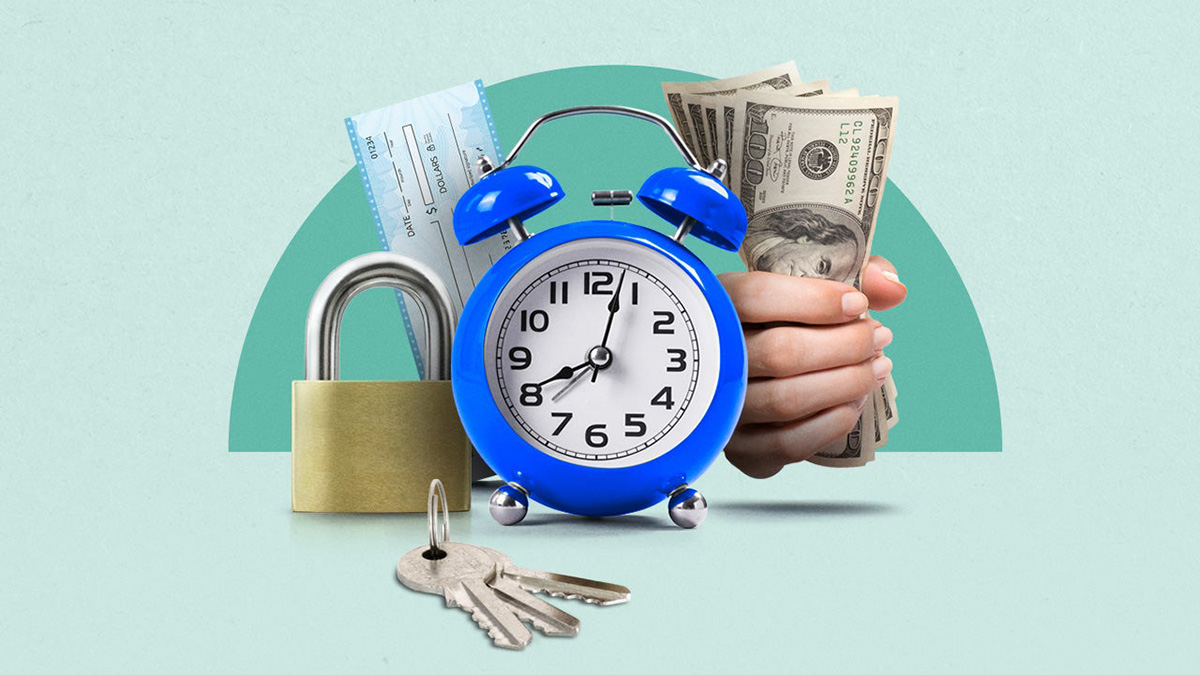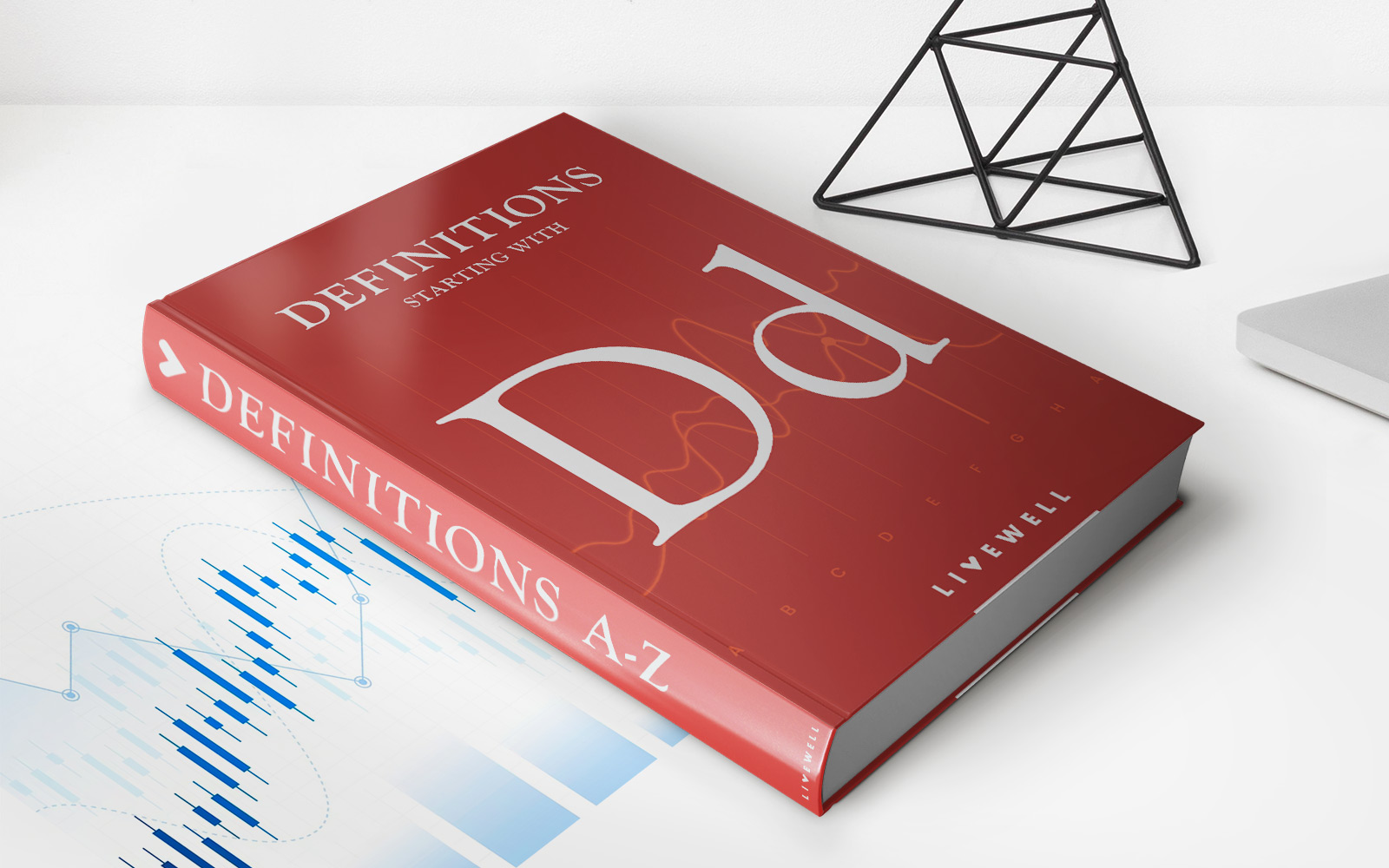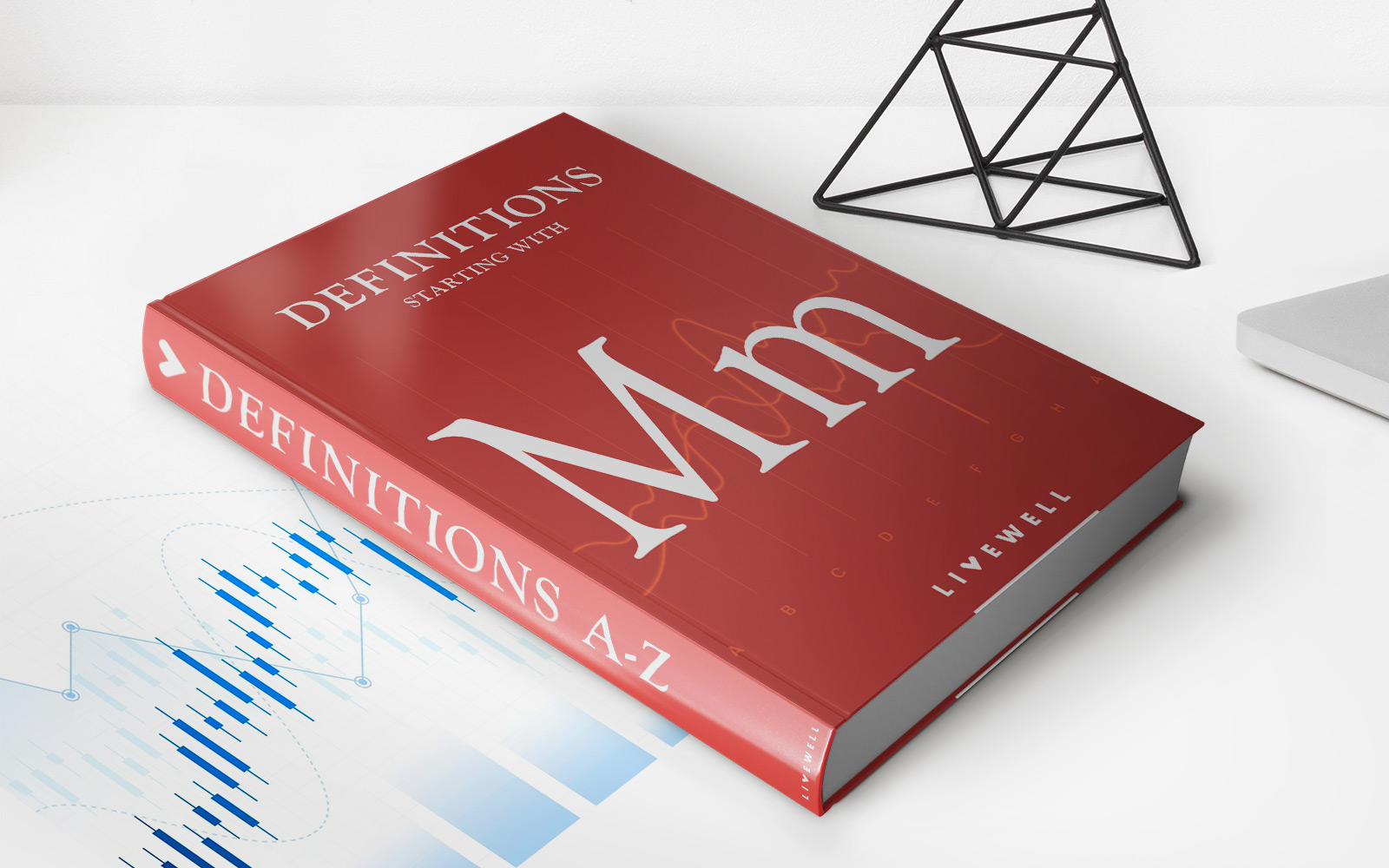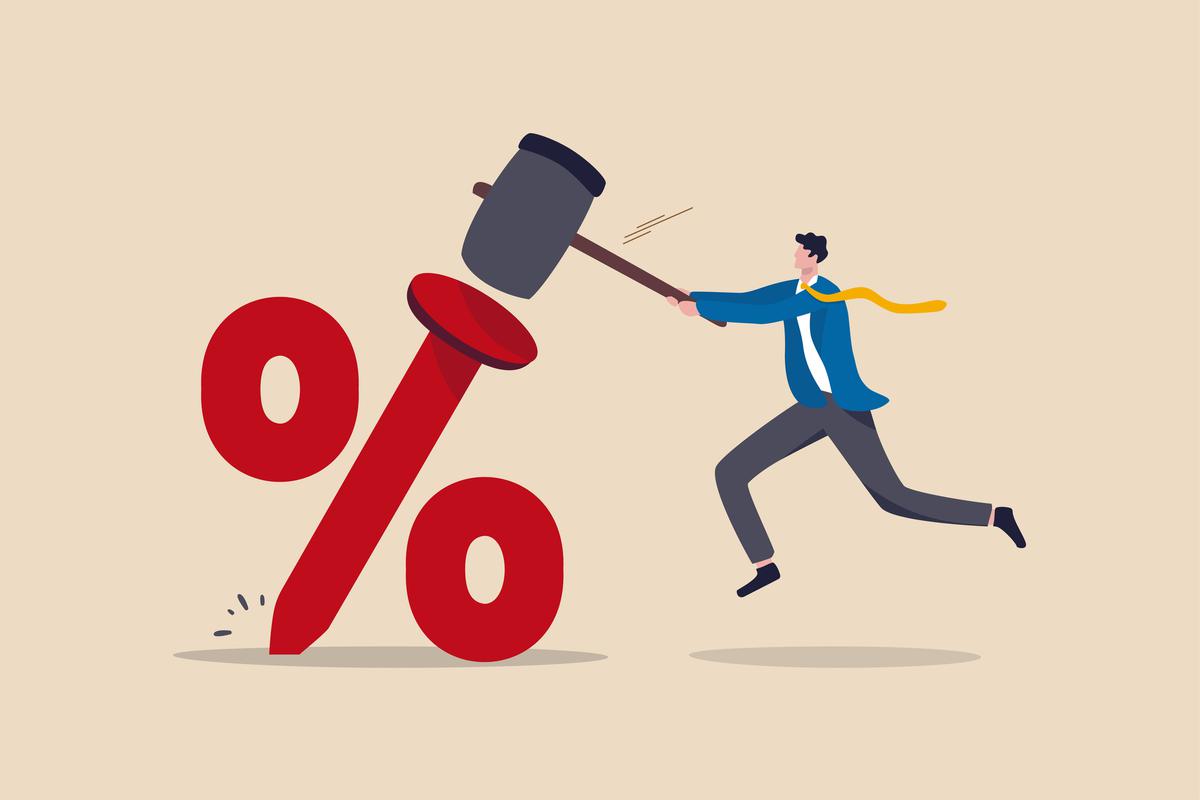Home>Finance>How Is Interest Calculated On Certificates Of Deposit


Finance
How Is Interest Calculated On Certificates Of Deposit
Modified: February 21, 2024
Learn how interest is calculated on certificates of deposit and make the most of your financial investments with our comprehensive guide on finance.
(Many of the links in this article redirect to a specific reviewed product. Your purchase of these products through affiliate links helps to generate commission for LiveWell, at no extra cost. Learn more)
Table of Contents
- Introduction
- What is a Certificate of Deposit (CD)?
- How Does a Certificate of Deposit Work?
- Types of Certificates of Deposit
- Understanding Interest Rates on Certificates of Deposit
- Factors Affecting CD Interest Rates
- Different Methods of Calculating CD Interest
- The Simple Interest Method
- The Compound Interest Method
- The Annual Percentage Yield (APY)
- Factors to Consider When Choosing a CD
- Conclusion
Introduction
A Certificate of Deposit (CD) is a popular financial instrument that allows individuals to earn interest on their savings over a specified period of time. CDs are offered by banks and credit unions, and they provide a secure and low-risk way to save money while earning a consistent return.
When it comes to financial planning, understanding how interest is calculated on a CD is essential. This knowledge helps investors make informed decisions about their savings and maximize their earnings potential. In this article, we will delve into the intricacies of CD interest calculations and explore the various factors that affect them.
Whether you’re a seasoned investor or a novice looking to grow your savings, this article will equip you with the knowledge necessary to make sound financial choices when it comes to investing in certificates of deposit.
We will start by explaining what a Certificate of Deposit is and how it works. Then, we will explore the different types of CDs available in the market. Next, we will focus on understanding the concept of interest rates on CDs and the factors that influence them. Finally, we will discuss the different methods used to calculate CD interest, including simple interest and compound interest, and emphasize the importance of considering the Annual Percentage Yield (APY) when comparing CD offers.
By the end of this article, you will have a comprehensive understanding of CD interest calculations, enabling you to make informed decisions when it comes to choosing the right CD for your financial needs.
What is a Certificate of Deposit (CD)?
A Certificate of Deposit (CD) is a financial product offered by banks and credit unions that allows individuals to deposit a specific amount of money for a predetermined period of time, usually ranging from a few months to several years. In return for depositing their funds, investors receive a fixed interest rate within the agreed-upon term.
CDs are considered low-risk investments because they are backed by the issuing financial institution, making them a safe option for individuals looking to grow their savings without subjecting their funds to market volatility. They are a popular choice for conservative investors seeking stable returns and a guaranteed principal investment.
Typically, CDs have higher interest rates compared to regular savings accounts, as the funds are locked in for a specific duration. The longer the term of the CD, the higher the interest rate tends to be. Investors can choose from various terms available, depending on their financial goals and time horizon.
One of the key features of a CD is that it has a fixed maturity date, which means that the funds cannot be withdrawn before the term ends without incurring a penalty. This feature provides stability and certainty, as investors know exactly when they can access their funds and the return they can expect to receive.
CDs come with different minimum deposit requirements, depending on the financial institution and the type of CD. While some institutions may have a minimum deposit as low as $500, others may require a higher minimum deposit, such as $10,000 or more. It is important to consider these requirements when choosing a CD that fits your financial situation.
In summary, a Certificate of Deposit is a secure and low-risk financial instrument that offers individuals the opportunity to earn a fixed interest rate over a specific time period. It is an ideal choice for those looking to grow their savings with a stable and predictable return, while keeping their funds protected from market fluctuations.
How Does a Certificate of Deposit Work?
A Certificate of Deposit (CD) works by allowing individuals to deposit a specific amount of money with a financial institution for a predetermined period of time. The investor agrees to keep the funds in the CD for the agreed-upon term, during which the money earns interest at a fixed rate.
When opening a CD, the investor selects the amount of money to deposit and the term of the CD. The term can range from a few months to several years, with longer terms usually offering higher interest rates. The investor cannot access the funds before the maturity date without incurring a penalty, which ensures the stability of the investment.
Once the CD is open, the financial institution uses the deposited money to lend and invest in various financial products. The interest earned on these investments is what allows the institution to pay the CD holder their return. The interest rate on a CD is fixed, meaning it will not change during the term of the CD, providing a predictable return on investment.
At the end of the term, when the CD matures, the investor has several options. They can choose to withdraw the funds, including the interest earned, and use them as desired. Alternatively, they can roll over the funds into a new CD with the same or a different financial institution, allowing the investment to continue growing.
It is important to note that CDs often have a grace period after the maturity date, during which the investor can decide what to do with the funds without being charged any penalties. If the investor does nothing during this grace period, the CD will typically automatically renew for the same term at the prevailing interest rate.
By investing in a CD, individuals can secure their funds for a specific period of time, earn a fixed interest rate, and have the flexibility to choose what to do with the funds once the CD matures. This makes CDs a reliable and straightforward option for those seeking stable returns on their savings while minimizing risk.
Types of Certificates of Deposit
When it comes to Certificates of Deposit (CDs), there are various types available to cater to the different needs and preferences of investors. Understanding the different types of CDs can help individuals make informed decisions about their savings and choose the right option for their financial goals. Here are some common types of certificates of deposit:
- Traditional Certificates of Deposit: These are the most common type of CDs and are offered by banks and credit unions. They have a fixed term and interest rate, and the funds are locked in until the maturity date. Traditional CDs often offer higher interest rates for longer terms.
- High-Yield Certificates of Deposit: Also known as Jumbo CDs, these are CDs that require a higher minimum deposit, typically $100,000 or more. In exchange for the larger deposit, high-yield CDs offer higher interest rates compared to traditional CDs.
- Callable Certificates of Deposit: Callable CDs allow the issuer, typically a bank, to “call back” the CD before the maturity date. If the CD is called, the investor receives their initial deposit along with any accrued interest. Callable CDs usually offer higher interest rates but come with the risk of early redemption.
- Brokered Certificates of Deposit: Brokered CDs are purchased through brokerage firms rather than directly from a bank. These CDs offer a wider range of terms and issuers, allowing investors to diversify their CD holdings. Brokered CDs may also have higher interest rates due to increased competition among different issuers.
- No-Penalty Certificates of Deposit: These CDs have the advantage of allowing investors to withdraw their funds before the maturity date without incurring any penalties. No-penalty CDs offer flexibility and liquidity, making them suitable for individuals who may need access to their money before the term ends.
- Bump-Up Certificates of Deposit: Bump-up CDs give investors the option to increase their interest rate to a higher rate if rates rise during the CD’s term. This allows investors to take advantage of better rates without having to open a new CD.
Each type of CD has its own features and benefits, and it’s important to consider factors such as deposit requirements, interest rates, liquidity, and flexibility when choosing the right CD for your financial needs.
By understanding the different types of certificates of deposit available, investors can tailor their savings strategy to align with their goals and preferences, maximizing their earnings potential while managing risk effectively.
Understanding Interest Rates on Certificates of Deposit
Interest rates play a crucial role in determining the return on investment for Certificates of Deposit (CDs). It is important for investors to understand how interest rates work on CDs, as they directly impact the amount of money earned over the term of the investment. Here’s what you need to know about CD interest rates:
Fixed Interest Rates: CDs offer fixed interest rates, meaning the rate is agreed upon at the time of opening the CD and remains constant throughout the term. This stability provides predictability and allows investors to plan their savings strategy accordingly.
Higher Rates for Longer Terms: Generally, CDs with longer terms offer higher interest rates compared to those with shorter terms. This is because longer-term CDs require investors to commit their funds for a longer period, thus compensating them with a higher return. It is important to consider your financial goals and time horizon when selecting the term of your CD.
Institutional Differences: Different financial institutions may offer varying interest rates on their CDs. It is worth shopping around and comparing rates from different banks or credit unions to ensure you secure the best rate possible. Online banks often offer competitive rates due to lower operating costs, so exploring these options can be beneficial.
Deposit Amounts: The amount of money you deposit in a CD can also affect the interest rate. Some financial institutions may offer higher rates for larger deposit amounts, while others may have tiered rates based on different deposit ranges. It is important to review the deposit requirements and rate structures when selecting a CD.
Market Conditions: CD interest rates can be influenced by overall market conditions and fluctuations in the economy. Changes in interest rates set by the Federal Reserve or shifts in market demand for CDs can impact the rates offered by financial institutions. It is important to stay informed about current market trends when considering CD investments.
Interest Payment Frequencies: Financial institutions offer different options for receiving interest payments on CDs. Some CDs offer interest payments on a monthly, quarterly, or annual basis, while others may provide the option to reinvest the interest back into the CD. Consider your cash flow needs and preferences when choosing the interest payment frequency.
Understanding the factors that affect CD interest rates is crucial when making investment decisions. By conducting thorough research, comparing offers, and assessing your financial goals, you can find a CD with an attractive interest rate that aligns with your investment strategy and helps you maximize your returns.
Factors Affecting CD Interest Rates
Several factors influence the interest rates offered on Certificates of Deposit (CDs). Understanding these factors can help investors make informed decisions when selecting a CD and maximize their potential returns. Here are the key factors that affect CD interest rates:
Market Conditions: The overall economic conditions and trends in the financial markets play a crucial role in determining CD interest rates. When the economy is strong and interest rates are rising, financial institutions typically offer higher rates on CDs to attract investors. Conversely, during times of economic uncertainty or when interest rates are low, CD rates may be lower.
Federal Reserve Policy: The monetary policy set by the Federal Reserve, the central bank of the United States, directly impacts interest rates. Changes in the Federal Reserve’s benchmark interest rate, known as the federal funds rate, can influence CD rates. When the Federal Reserve raises rates, CD rates tend to increase, and vice versa.
Banking Competition: Competition among banks and credit unions also affects CD interest rates. In areas with many financial institutions vying for customers, rates may be more competitive, leading to higher CD rates. Conversely, areas with fewer options for banking services may have lower CD rates due to reduced competition.
Term Length: The length of the CD term is another crucial factor in determining interest rates. Generally, longer-term CDs offer higher interest rates compared to shorter-term CDs. Financial institutions require investors to commit their funds for a longer period, so they offer a higher return as compensation for the additional time the money is locked up.
Deposit Amount: The amount of money you deposit in a CD can also impact the interest rate. Some financial institutions provide tiered interest rates, where larger deposit amounts receive higher rates. Investing a larger sum of money may result in a more favorable interest rate.
Inflation Expectations: Inflation expectations in the economy also influence CD interest rates. If inflation is expected to increase, financial institutions may offer higher interest rates on CDs to account for the potential loss of purchasing power over time.
Creditworthiness of the Issuing Institution: Financial institutions with higher creditworthiness and stability are often able to offer more competitive CD rates. Investors may be more inclined to choose CDs from well-established and reputable institutions, which can lead to slightly higher interest rates.
Special Offers or Promotions: Financial institutions may occasionally offer special promotions or limited-time offers on CDs, which can include higher interest rates. These promotional rates may be available for a specific term or to attract new customers, so it’s worth keeping an eye out for such opportunities.
By considering these factors, investors can assess the prevailing CD interest rates and choose the most suitable option to align with their financial goals and risk tolerance. It is important to carefully research and compare different CD offerings to secure the best possible rate for your investment.
Different Methods of Calculating CD Interest
Calculating interest on Certificates of Deposit (CDs) is an important aspect of understanding the potential returns from these financial products. Financial institutions use various methods to calculate CD interest, each with its own implications for investors. Here are the different methods commonly used:
Simple Interest: Simple interest is the most straightforward method of calculating CD interest. With this method, interest is calculated based solely on the principal amount and the specified interest rate. It does not take into account any previous interest earned. The formula for simple interest is: Interest = Principal x Rate x Time.
Compound Interest: Compound interest is a more common method used to calculate CD interest. With compound interest, the interest is calculated not only on the initial principal amount but also on the accumulated interest from previous periods. The interest is typically compounded on a monthly, quarterly, or annual basis, depending on the terms of the CD.
Annual Percentage Yield (APY): The Annual Percentage Yield (APY) is an important measure for investors to consider when comparing CD offers. APY calculates the effective annual interest rate, taking into account compounding intervals and any applicable fees. It provides a standardized way to compare CD rates among various institutions and helps determine the true return on investment.
It’s important to note that the compounding frequency can significantly impact the overall interest earned on a CD. The more frequently interest is compounded, the higher the effective interest rate will be compared to a CD with the same nominal rate but a lower compounding frequency.
When comparing CD offers, investors should pay attention to both the nominal interest rate and the frequency of compounding. Higher interest rates and more frequent compounding will result in greater returns over the term of the CD.
Financial institutions typically provide information on the method used for interest calculation and the compounding frequency in their CD product offerings. It is important for investors to understand the implications of these methods and consider them when making investment decisions.
By understanding the different methods used to calculate CD interest, investors can have a clearer view of the potential earnings from their investments. Comparing offers and considering factors such as compounding frequency and APY can help investors choose the CD that aligns with their financial goals and offers the most favorable returns.
The Simple Interest Method
The simple interest method is one of the ways financial institutions calculate interest on Certificates of Deposit (CDs). This method is straightforward and requires considering only the principal amount and the specified interest rate without taking into account any compounding.
With the simple interest method, the interest earned on a CD is calculated based on the initial principal amount and the duration of the investment. The formula for calculating simple interest is:
Interest = Principal x Rate x Time
Here, the principal refers to the initial deposit amount, the rate represents the agreed-upon interest rate, and the time denotes the duration of the CD in years.
For example, consider an investor who deposits $5,000 into a CD with a simple interest rate of 3% for a term of 2 years. Using the simple interest formula, we can calculate the interest earned as follows:
Interest = $5,000 x 3% x 2 = $300
In this case, the investor would earn $300 in interest over the 2-year term. The total amount at maturity would be the sum of the principal and the interest earned, which in this example would be $5,000 + $300 = $5,300.
While the simple interest method is easier to understand, it typically results in lower total returns compared to the compound interest method. This is because it does not take into account the interest that would be earned on the accumulated interest from previous periods.
When considering CDs, it’s important to note that not all financial institutions use the simple interest method. Many banks and credit unions use compound interest, which can result in higher returns due to the compounding effect. It’s crucial to carefully review the terms and conditions of the CD to understand how the interest is calculated.
The simple interest method can be advantageous for individuals seeking a clear and predictable return on their investment. It may be appropriate for shorter-term CDs or for those who prefer simplicity and don’t require the compounding effect of interest.
By understanding the simple interest method, investors can make informed decisions when selecting CDs and assess which method aligns with their financial goals and preferences.
The Compound Interest Method
The compound interest method is a commonly used approach for calculating interest on Certificates of Deposit (CDs). Unlike the simple interest method, compound interest takes into account the interest that accumulates over time, resulting in higher returns on the CD investment.
With compound interest, the interest is added to the initial principal amount, and subsequent interest calculations are based on this new total, including both the principal and the accumulated interest. The interest is typically compounded on a monthly, quarterly, or annual basis, depending on the terms of the CD.
The formula for calculating compound interest is:
Future Value = Principal × (1 + Rate/Compounding Frequency)^(Compounding Frequency × Time)
Here, the future value represents the total amount at maturity, the principal is the initial deposit amount, the rate is the agreed-upon interest rate, the compounding frequency refers to how often the interest is compounded, and the time is the duration of the CD in years.
For example, suppose an investor deposits $10,000 into a CD with a compound interest rate of 5% compounded annually for a term of 3 years. Using the compound interest formula, we can calculate the future value as follows:
Future Value = $10,000 × (1 + 5%/1)^(1 × 3) = $11,576.25
In this case, the investor would earn $1,576.25 in interest over the 3-year term. The total amount at maturity would be $11,576.25, which includes the initial principal and the accumulated interest.
The compound interest method allows for the exponential growth of the investment over time. As the interest earned is added back to the principal, subsequent interest calculations are based on a larger sum, resulting in a compounding effect that boosts the overall returns.
When comparing CDs, it’s important to consider the compounding frequency, as more frequent compounding can lead to higher returns. CDs with monthly or quarterly compounding generally offer greater overall interest than those with annual compounding.
The compound interest method offers the potential for higher returns compared to the simple interest method. This makes it a preferred choice for many investors seeking to maximize their earnings on their CD investments over an extended period.
By understanding the compound interest method, investors can make informed decisions when selecting CDs and assess the potential growth of their investment over time. It’s important to review the terms and conditions of the CD to determine how often interest is compounded and to calculate the potential returns accordingly.
The Annual Percentage Yield (APY)
The Annual Percentage Yield (APY) is an important measure used to calculate the effective annual interest rate on Certificates of Deposit (CDs) and other financial products. It provides investors with a standardized way to compare different CD offers and understand the true return on their investment.
APY takes into account both the nominal interest rate and the compounding frequency to calculate the annual rate of return. It reflects the total amount an investor can expect to earn in a year, including the impact of compounding.
APY is calculated using the following formula:
APY = (1 + (Nominal Interest Rate / Compounding Frequency))^(Compounding Frequency) – 1
Here, the nominal interest rate represents the stated annual interest rate on the CD, while the compounding frequency indicates how often the interest is compounded, such as annually, quarterly, or monthly.
For example, if a CD has a nominal interest rate of 4% and interest is compounded quarterly, the APY can be calculated as:
APY = (1 + (4% / 4))^4 – 1 = 4.06%
In this case, the APY of the CD is 4.06%, which accounts for the compounding effect on the investment.
APY is a valuable tool for comparing CD offers from different financial institutions. It allows investors to make an apples-to-apples comparison of the returns they can expect from CDs with varying interest rates and compounding frequencies.
It’s important to note that APY takes into account any fees or penalties associated with the CD. This ensures that the APY accurately represents the net return on the investment, after accounting for any charges.
When comparing CDs, it’s crucial to consider the APY alongside other factors such as the initial deposit amount, the term, and any special features or terms associated with the CD. By comparing the APYs of different CDs, investors can make more informed decisions and select the CD that offers the highest rate of return.
Understanding the concept of APY helps investors assess the true earnings potential of their CD investments. It allows for better comparison and decision-making when selecting CDs for their savings goals while considering factors such as compounding frequency and any associated fees or penalties.
Factors to Consider When Choosing a CD
When selecting a Certificate of Deposit (CD), it is important to carefully consider various factors to ensure it aligns with your financial goals and preferences. Here are some key factors to keep in mind when choosing a CD:
Interest Rate: The interest rate is a crucial factor when comparing CDs. Higher interest rates can significantly impact the overall returns on your investment. Take the time to research and compare rates offered by different financial institutions to find the highest rate available.
Term Length: CDs come with different term lengths, ranging from a few months to several years. Consider your financial goals and time horizon. If you have a short-term goal or need access to your funds soon, a shorter-term CD may be more suitable. If you are looking to save for a long-term goal, a longer-term CD might provide a higher interest rate.
Minimum Deposit Requirement: Financial institutions often have a minimum deposit requirement for CDs. Determine how much you are willing to invest and ensure that it meets the minimum requirement. Some institutions offer CDs with low minimum deposits, while others have higher thresholds.
Early Withdrawal Penalties: CDs are designed for a fixed term, and withdrawing funds before the maturity date may result in penalties. Review the early withdrawal penalty policy of the CD you are considering. Evaluate your financial needs and make sure you can keep the funds locked for the specified duration to avoid any penalties.
Compounding Frequency: Consider how often the interest on the CD is compounded. CDs with more frequent compounding, such as monthly or quarterly, can provide higher overall returns compared to those with annual compounding. Assess the compounding frequency alongside the interest rate to gauge the potential growth of your investment.
Callable CDs: Some CDs are callable, meaning the issuing institution has the right to recall or redeem the CD before the maturity date. Callable CDs often offer higher interest rates but may come with the risk of early redemption. Evaluate the terms of callable CDs and consider your risk tolerance before investing.
FDIC Insurance: Ensure that the financial institution offering the CD is FDIC-insured. FDIC insurance provides protection for your deposit, up to the specified limits, in case the institution fails. This adds an extra layer of security to your investment.
Additional Features: Some CDs may offer additional features or benefits, such as the ability to “bump up” the interest rate if rates rise or the option to make additional deposits during the term. Assess these features and determine if they align with your needs and preferences.
Renewal Process: Understand the renewal process of the CD. Some CDs may automatically renew at the prevailing interest rate if no action is taken during a specified period. Be aware of the renewal terms and evaluate whether you want to continue with the CD or explore other options.
By considering these factors, you can choose a CD that suits your financial goals, risk tolerance, and liquidity needs. Careful evaluation and comparison of different CDs can ensure that you make an informed decision and maximize the returns on your savings.
Conclusion
Certificates of Deposit (CDs) offer a secure and reliable way to grow your savings while earning a consistent return. Understanding how interest is calculated on CDs is crucial for maximizing the potential earnings from these financial instruments. In this article, we explored the various aspects related to CD interest calculations and factors that affect them.
We started by explaining the concept of CDs and how they work, providing a foundation of knowledge for investors. We then discussed different types of CDs available, such as traditional CDs, high-yield CDs, callable CDs, and more, allowing individuals to choose a CD that aligns with their specific needs and preferences.
Furthermore, we delved into the intricacies of CD interest rates, emphasizing how market conditions, Federal Reserve policy, banking competition, term length, deposit amount, inflation expectations, creditworthiness of the issuing institution, and special offers impact the rates offered by financial institutions. By considering these factors, investors can make informed decisions and select CDs that offer competitive rates and attractive returns.
We also explored the different methods of calculating CD interest, including the simple interest method and the compound interest method. By understanding these methods, investors can assess the potential growth and earnings on their CD investments, determining which method suits their financial goals and preferences.
Additionally, we discussed the importance of considering the Annual Percentage Yield (APY) when comparing CDs. APY allows for standardized comparison of CD offers, helping investors understand the true return on investment after accounting for compounding and any associated fees.
Finally, we highlighted the key factors to consider when choosing a CD, such as the interest rate, term length, minimum deposit requirement, early withdrawal penalties, compounding frequency, FDIC insurance, additional features, and the renewal process. By carefully evaluating these factors, investors can make well-informed decisions that align with their financial goals and needs.
In conclusion, investing in Certificates of Deposit can be a valuable addition to your financial strategy. By understanding how interest is calculated on CDs and considering the various factors involved, you can make informed decisions that lead to optimal returns on your savings. Whether you’re a conservative investor seeking stability or someone looking to diversify their investment portfolio, CDs offer a secure and reliable way to grow your wealth while minimizing risk.

